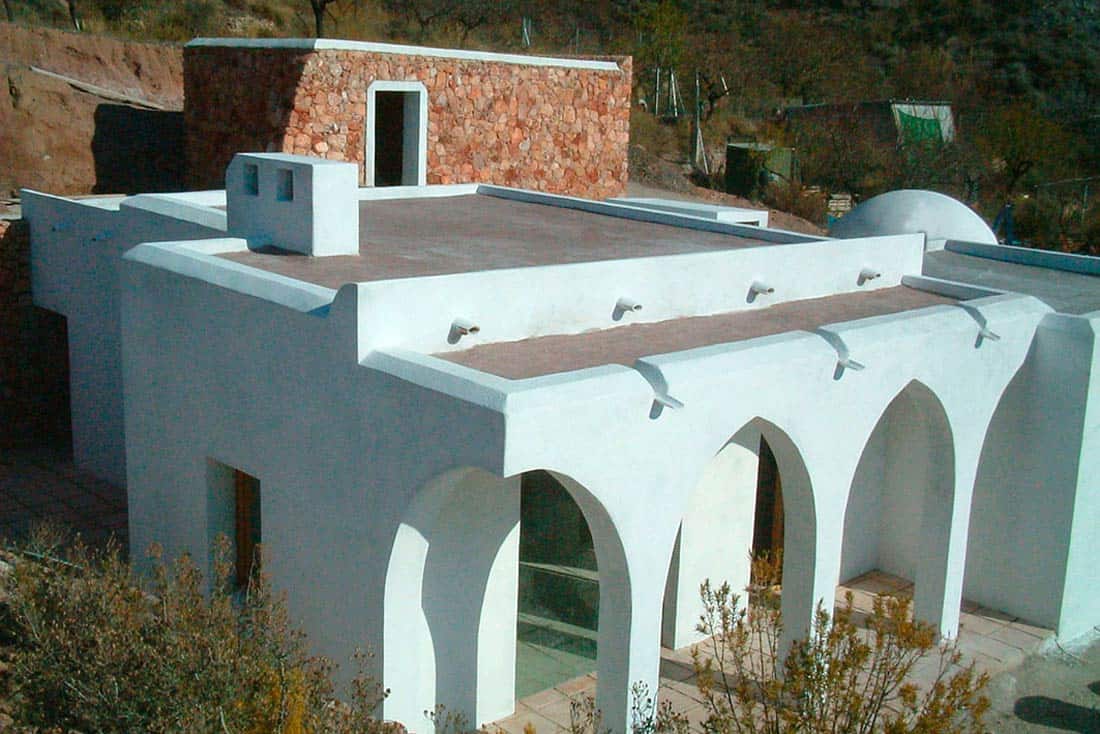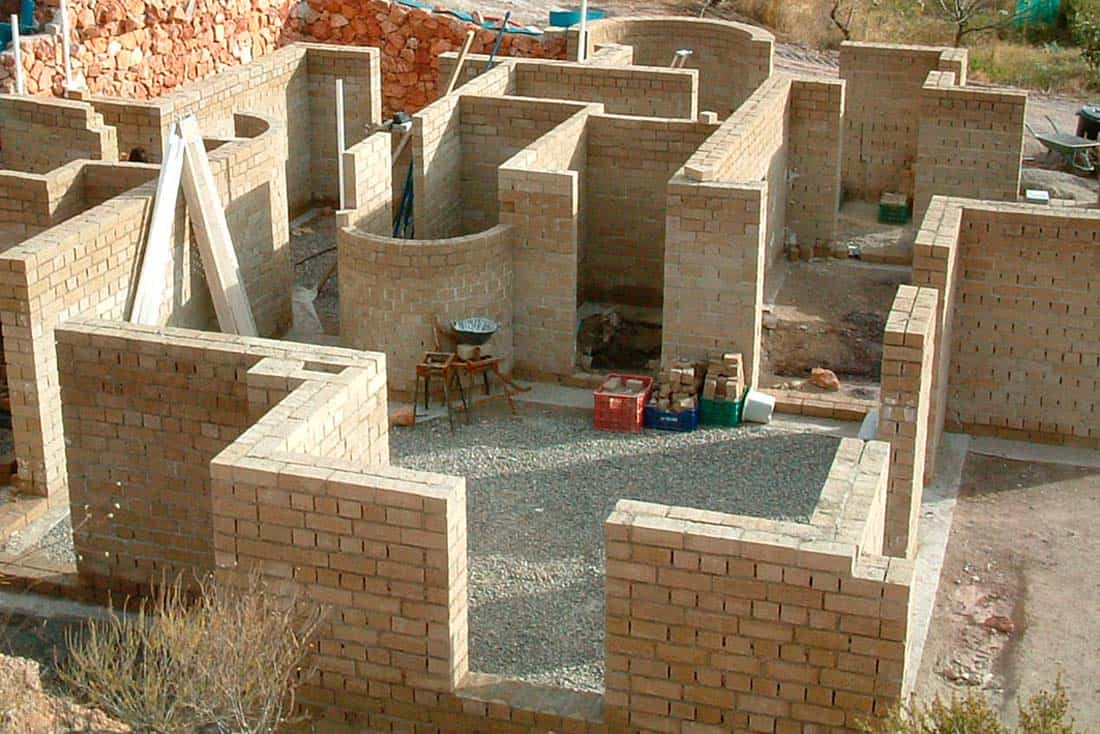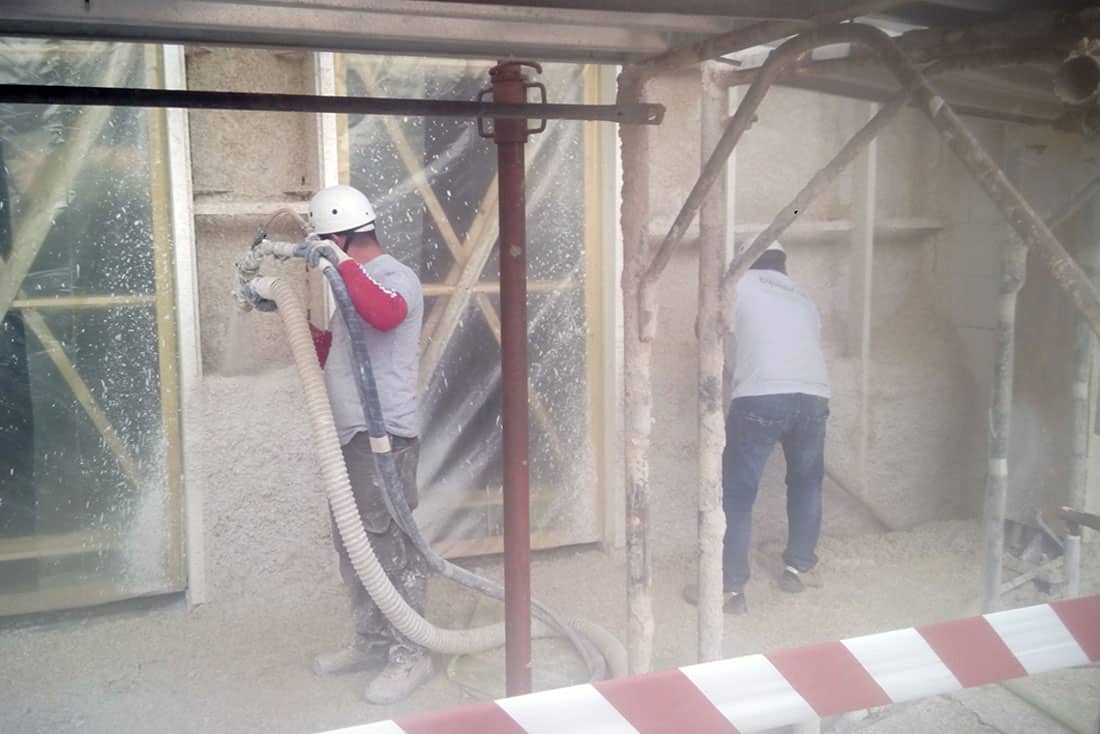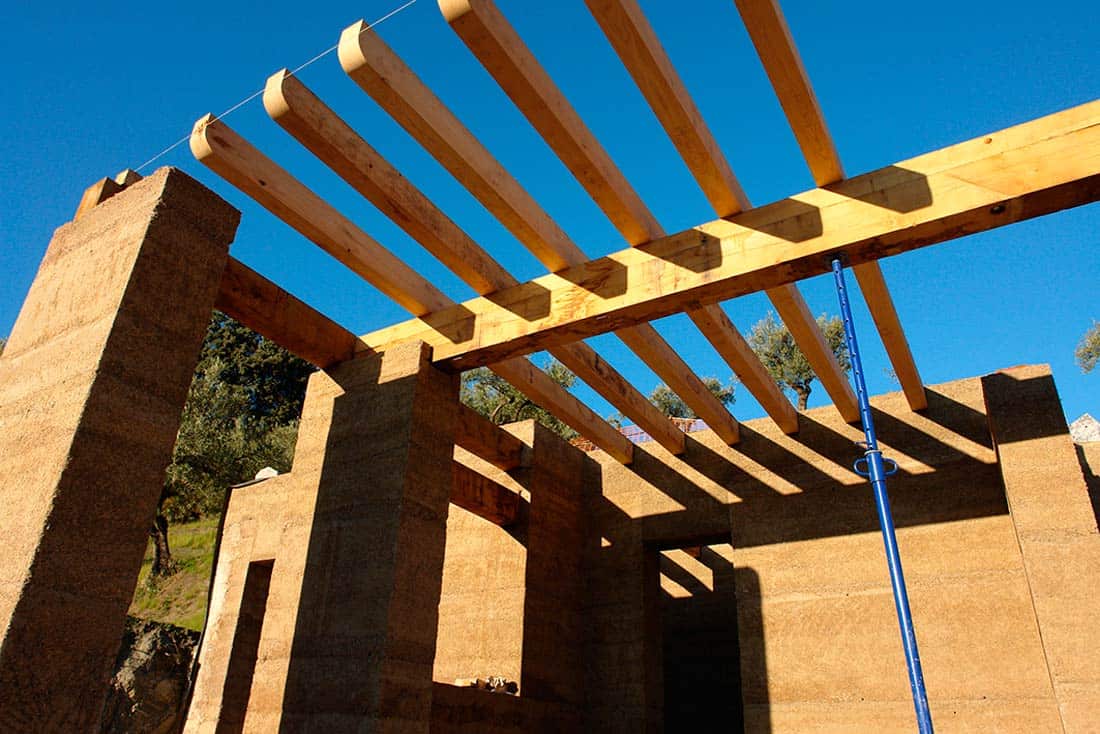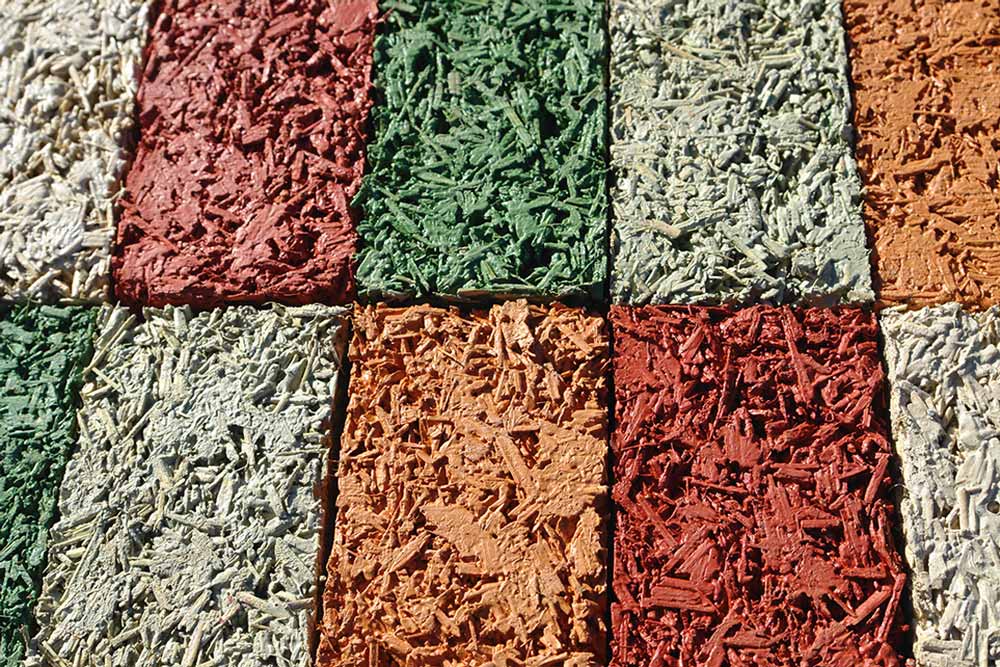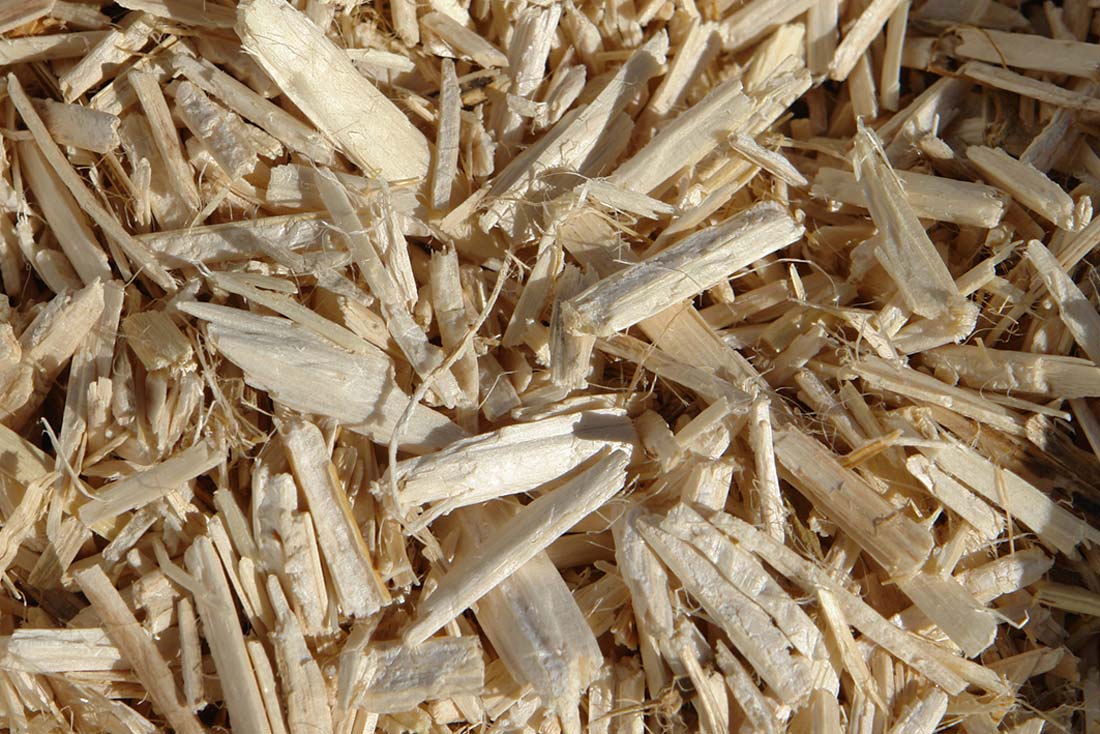Emerging tendencies, inspired by environmental and energy saving criterions for building envelopes, refocus on a new challenge: the use of plant materials as bio aggregates in green concretes. Hemp concrete has not only a positive balance in its climate change indicator, it also has a positive health impact. Increasing research, developed mainly over the last 15 years, highlights innovative applications of natural fibres for the green building sector among which hemp concrete is one of the most promising.
Cannabis is known as one of the most versatile crops and therefore one of the oldest culture plants, confirmed by archeological findings dating from 6,000 years ago. Yet, researchers estimate that it was already farmed in Asia about 10,000 years ago, parallel to the climate change at the beginning of the Neolithic period, and basically for fibre, food, medical and psychoactive destinations [1]. Its adaptive response to divers climates, its low fertilizer demand, its biocide free farming and its ability for crop rotations explain its expansion and cultural importance, confirmed by numerous historical statements.
From historic point of view hemp had important papers as fiber plant, it was already manufactured to rope and textile in the 18th dynasty in Egypt, 3500 years ago. Moreover hemp paper manufacturing technology was responsible for the spread of science and wisdom during the Abassid Caliphate, when this technology was taken over by the Muslims from Chinese prisoners during the Samarkand battle at the year 751 of present time, while the technology of paper manufacturing was already practiced 2100 years ago in China [2]. Hemp experienced a maximum employment during the 17th century’s seafaring where up to 100 tons of hemp fibre was employed per sailing ship. However, modern uses, that were developed already last century experienced a drawback as soon as legal reasons blocked the farther development in numerous countries until recent changes of law focused again on the industrial and medical uses of hemp (e.g. in 1941, Henry Ford already developed hemp bio fuel and a bio-plastic for car bodies [3] that was containing 70% cellulose from slash pine, straw, hemp and ramie fibre, lighter and with better mechanical performance than steel).
Walls with hemp clay bricks
Since about 25 years ago the potential of hemp was rediscovered for green development in Europe. European legislations were adapted in several countries in favor of the growth and processing of industrial hemp varieties with a THC level below 0,2% in the upper third of the plant. Simultaneously this multi-beneficial crop was developed to thousands of products and derivates for very divers sectors like textile, automotive, industrial design, food, medical, paper, cosmetic, paint, animal bedding and care, biomass and construction among others. Recent changes of law in favor of hemp farming and processing on a global scale are only then sustainable when taking into account the utilization of the whole resource [1] as well as local circumstances. Due to economic interests this model is unfortunately not always practiced.
Construction is known to consume actually about 40% of the world’s global energy, 25% of the global water and 40% of the global resources (UN Environment Program, 2016). This consumption can be drastically reduced with the substitution of mineral aggregates by plant aggregates. This measurement not only locks carbon dioxide inside the building envelope but also reduces operational energy [4], e.g. air conditioning, what makes the insulating hemp concrete extremely interesting to combat climate change.
Hemp lime concrete sprayed application on a brick façade
Currently about 5,000 tons of hemp material is yearly employed for construction purposes in France, the country that started to develop in insulating building materials from hemp in the early years 90 followed by other European countries and developing in the last 15 years towards a global interest, undertaken by a growing research on this field. The materials are based on the two main components of the hemp stem: fibre (about a third part of the stem material) and the more abundant woody core (historically often considered as waste product of hemp fibre de-cortication), transformed mainly into particles of 2-25 mm length, called hemp hurds or shives. Hemp is naturally free of nutrients for parasites, it doesn’t need to get protected, like wood and some other plant based materials and is difficult flammable (classification B1 or B2). Construction materials based on hemp range from loose wool (100% hemp) or thermo-welded insulating panels (85% hemp fibre or 80% hemp fibre and hurds) and non woven felts for acoustic damping or leveling (100% hemp fiber) to particle boards for dry walls and ceilings (up to 100% hemp), pellets for slabs (pressed dust, by product of hemp fiber decortication), hemp fiber reinforced polymers for façade panels and curtain walls and hemp oil based varnishes. Hemp insulation panels replace non renewable resourced and energy consuming insulation materials like glass and rock wool, that show the same or very similar thermal conductivities. Nevertheless, tests were proving that U-values alone, determined in laboratory conditions, are not a suitable parameter for evaluating the thermal performance of a hemp based material since it is exposed to real weather conditions [5]. For instance synthetic fibres are unfavorable materials in summer conditions because they show a much lower phase shift in comparison with hemp fibre based insulators.
Detail of casted, compacted hemp concrete walls
However, the most versatile insulation material is hemp concrete. Mixed e.g. with hemp hurds, lime (or other natural binders) and water, this material allows a consumptions of up to one cubic meter hemp hurds per constructed square meter. the whole building envelope can be done with it, since its mechanical strength and fire classification are more favorable then in hemp wool insulators and even an important fire resistance (more than 120 minutes) can be achieved in load-bearing concretes, without reducing the hemp content. Its aptitude for inside applications and its water vapor diffusivity makes it very interesting not only for bioclimatic architecture but also for retrofitting of vernacular architecture. Furthermore a un-rendered 30 cm thick hemp concrete wall enables a storage of 36.08 kg of CO2 per m2 [6].
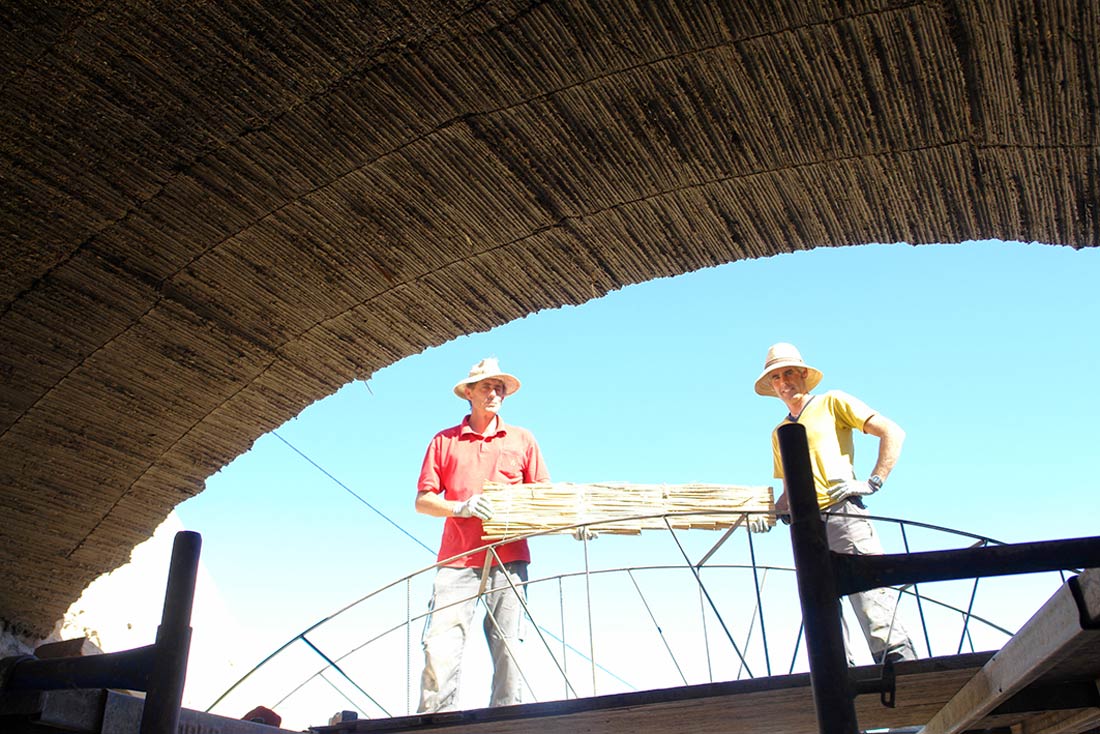 Structural vault of hemp concrete
Structural vault of hemp concrete
Main applications are concretes for manually compacted, casted walls, sprayed insulation coatings, external and internal plasters, premade blocks and panels for non load-bearing or load-bearing applications, floor slabs, slabs and roof insulation, including structural applications like vaults and cupolas. Densities of this concretes start with 200-250 kg/m3 (sprayed coatings or void filler), while a wall mixture for non load-bearing applications ranges usually from 400-500 kg/m3. Whereas hemp consumption is unchanged, higher densities of 600 kg-1000 kg are achieved, among other methods, with higher binder content [7] what increases the mechanical strength. Those concretes and mortars are used in plasters, external renders and load-bearing applications. For environmental and economic reasons non calcined binders, e.g. clay based ones, are preferable in load-bearing applications. Hemp concrete is mainly known as hemp lime building [8], an interesting option in view of the fact that the porosity of lime doesn’t hinder the capacity of hemp for absorption, transfer and phase change of water in vapor and liquid forms. It also contributes to temperature regulation by osmosis. While aerial lime carbonates (hardening progresses slowly) and is very sensitive to climate conditions, hydraulic lime as well as mixes of aerial lime and puzzolanic aggregates are favorable options to accelerate the hardening process of a hemp concrete and allow setting with important coatings or wall thicknesses, without compromising the water vapor diffusion, compared to aerial lime binder. While lime binder is even giving favorable results in humid climates, the uses of gypsum, un-stabilized clay and organic binders are limited or precise constructive measurements to protect them from water. Apart from greater setting problems than with lime or lime with small amount of hydraulic binder, Portland cement is not recommended as the only binder in a hemp concrete because of environmental aspects. Its energy demand during the fabrication process is higher than in hydraulic limes and only a very small amount of carbon dioxide, emitted in this process, is reabsorbed in its hydraulic hardening process. On the other hand the addition of small amounts of natural cement to aerial lime can be useful during unfavorable drying conditions (natural cement is a similar product to hydraulic lime but thanks to the composition of its raw material it hardens quick and develops important mechanical strength in a short period of time). The pure cement use doesn’t increase significantly the mechanical strength compared with hydraulic lime since it shoes important setting problems in a hemp concrete matrix and also can’t compete with other positive material properties of lime and other natural binders like clay.
Natural and colored hemp lime concrete samples
Detail hemp hurds, sized 2-25 mm, containing 5% fibers
The innovative paper of hemp concrete as construction material is its function as a multi performance material, replacing entirely the mineral aggregates, used in conventional concretes [9], while in historic applications natural fibers where mainly added in meager amounts to concretes and mortars, e.g. to avoid retractions in a earthen plaster or adobe brick. For the reason that it possesses a porous intra and inter particular structure of up to more than 70% [10], the intentions with hemp concrete are material improvements on a thermal, hygrothermal and acoustic scale, creating additionally a carbon storing building envelope, combining hemp hurds or chopped stalk with a natural binder and water. While in the northern and central part of Europe formulations of this multi porous material are mainly designed to adapt to cold climate, thus are very light weight and depend from a wooden support structure, tendencies in the Mediterranean region focus on hemp concrete as a structural material with very dynamic thermal properties by adding a higher thermal inertia component. This is to avoid very light and porous mixes with low or moderate thermal conductivities, ranging from 0.06 to 0.12 W/(m·K), that can cause overheating in summer conditions. At the same time the need to import wood is drastically reduced, where this resource is limited. The elimination of the structure is important in the total balance of the life cycle of a hemp lime concrete where the lime has the first and the wooden structure the second most important impact [11]. Final carbon footprint of a hemp concrete can be drastically reduced by replacing lime binders for clay binders, as the re-absorption of CO2 of calcined binders is un-complete, also due to setting problems. In spite of a positive balance of all phases of their life cycle, a drawback in the use of plant based building materials like hemp concrete is still their higher purchase price, compared with conventional mainstream materials [12] and a general a lack of information and know how on this new technology. That’s why still a minority of customers is choosing for it, valorizing specially its superior ecologic and environmental qualities, its energy saving benefits and its hygrothermal behavior, that contributes to wellbeing. Further natural fibers are more difficult to master in a concrete matrix than mineral and synthetic fibers, e.g. because of their important water intake or their negative influence on the setting process of mineral and organic binders [13]. Thermal behavior is influenced by weathering conditions, that’s what norms are not always taking into account in regard to the performance of a hemp concrete. They also don’t contemplate the complex acoustic performance of this anisotropic material, and don’t consider alternative technologies in the work with the same, e.g. the elimination of membranes (used in conventional construction) to allow the exploitation of their hygrothermal qualities. Mechanical performance is far inferior then in steel concrete. This surely limits the use of hemp concrete as a load-bearing material. With around 2 MPa, when not exceeding a density of 1000 kg/m2, its compressive strength is comparable to other similar, historic materials found in load-bearing applications of 3 or more storey buildings, e.g. earth bricks. Bricks allow the work in difficult drying conditions and avoid long waiting periods till the humidity of the wall is in equilibrium with the environment. Premade elements are suitable for large projects and allow mainstream applications.
Although since the industrial revolution were predominating other values in architecture new tendencies highlight the valuation of materials and concepts, linked to nature, as continuation if previous models, practiced before natural materials got progressively substituted by industrial products. Meanwhile hemp concrete is actually gaining world wide interest, science is achieving important knowledge to manage the performance of this innovative system, approaching optimum results and durability, required for its present and future applications.
